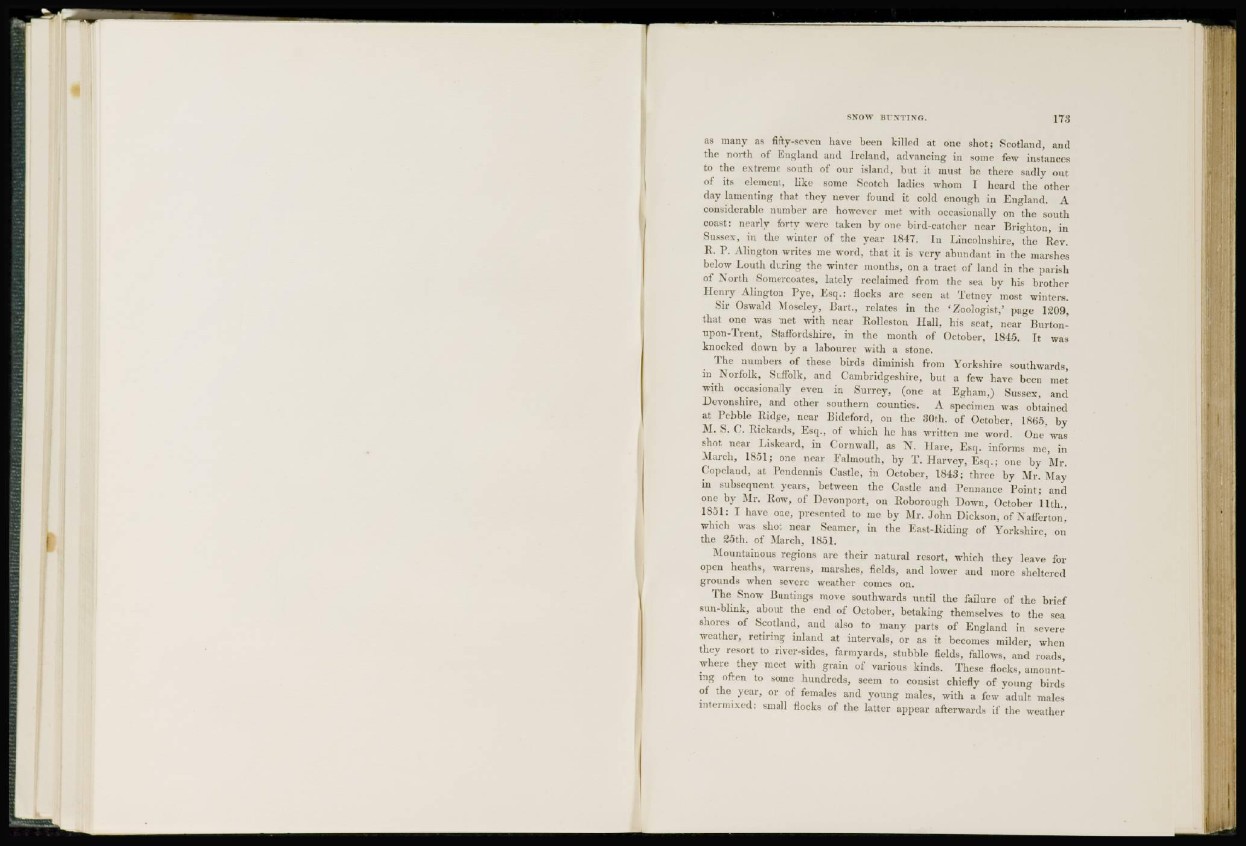
us many as fifty-seven have been killed at one shot; Scotland, and
the north of England and Ireland, advancing in some few instances
to the extreme south of our island, but it must be there sadly out
of its element, like some Scotch ladies whom I heard the other
day lamenting that they never found it cold enough in England. A
considerable number are however met with occasionally on the south
coast: nearlv forty were taken by one bird-catcher near Brighton, in
Sussex, in the winter of the year 1847. In Lincolnshire, the Rev.
R. P. Alington writes me word, that it is very abundant in the marshes
below Louth during the winter mouths, on a tract of laud in the parish
of North Somcrcoates, lately reclaimed from the sea by his brother
Henry Alington Rye, Esq.: flocks are seen at Tetney most winters.
Sir Oswald Moseley, Bart., relates in the 'Zoologist,' page 1209,
that one was met with near Rolleston Hall, his seat, near Burtonupon
Trent, Staffordshire, in the month of October, 1845. It was
knocked down by a labourer with a stone.
The numbers of these birds diminish from Yorkshire southwards,
in Norfolk, Suffolk, and Cambridgeshire, but a few have been met
with occasionally even in Surrey, (one at Egham,) Sussex, and
Devonshire, and other southern counties. A specimen was obtained
at Pebble Ridge, near Bidcford, on the 80th. of October, 1865. by
M. S. C. Rickards, Esq., of which he has written me word. One was
shot near Liskeard, in Cornwall, as N. Hare, Esq. informs me, in
March, 1851; one near Falmouth, by T. Harvey, Esq.; one by Mr.
Copcland, at Pendennis Castle, in October, 1843; three by Mr. May
in subsequent years, between the Castle and Pennancc Point; and
one by Mr. Row, of Devonport, on Roborough Down, October 11th..
1851: I have one, presented to me by Mr. John Dickson, of Nafferton.
which was shot near Seamcr, in the East-Riding of Yorkshire, on
the 25th. of March, 1851.
Mountainous regions are their natural resort, which they leave for
open heaths, warrens, marshes, fields, and lower and more sheltered
grounds when severe weather comes on.
The Snow Buntings move southwards until the failure of the brief
sun-blink, about the end of October, betaking themselves to the sea
shores of Scotland, and also to many parts of England in severe
weather, retiring inland at intervals, or as it becomes milder, when
they resort to river-sides, farmyards, stubble fields, fallows, and roads,
where they meet with grain of various kinds. These flocks, amounting
often to some hundreds, aeem to consist chiefly of young birds
of the year, or of females and young males, with a few adult males
intermixed: small flocks of the latter appear afterwards if the weather